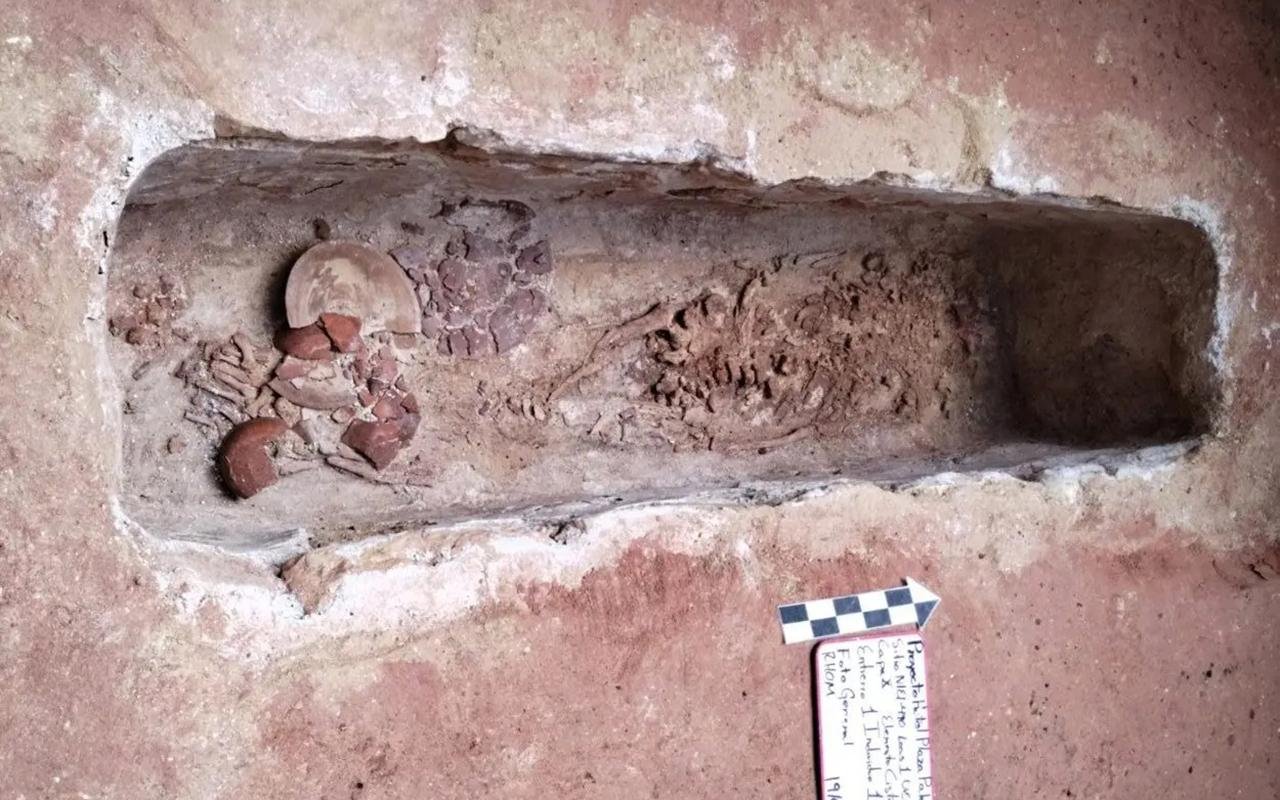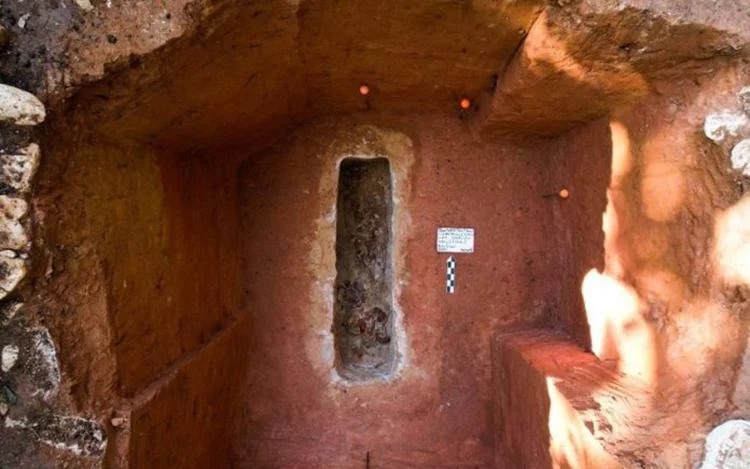
Archaeologists from Mexico’s National Institute of Anthropology and History (INAH) have unearthed an ancient tomb containing funerary offerings during construction work on the Tren Maya Hotel in Palenque, Mexico.

The grave was discovered on September 11. Palenque, also known as Lakamha, is located in the state of Chiapas, near the Usumacinta River. It dates back to 226 BCE and CE 799, with significant construction efforts aimed at rebuilding the city in response to attacks by the city of Calakmul and its client states in CE 599 and CE 611.
The city has been designated as a UNESCO World Heritage Site in 1987.
The tomb was found about two kilometers from the city’s central area, a place that once housed towering temples and a sprawling palace compound.

The skeletal remains found in a stone box within the tomb are believed to belong to a high-status individual, based on the grave’s proximity to the ancient city of Palenque. The remains were accompanied by three ceramic vases, ear flares, and greenstone beads.
Diego Prieto Hernández, the director-general of INAH, stated, “The individual was placed face up, with his legs extended and his head facing north.” He also noted that the tomb was built specifically to honor this important person within the community.

The excavation was conducted as part of the Mayan Train project, a 948-mile intercity railway project initiated in 2020. This hotel, which sits along the train line, was the site of the pre-Hispanic grave, discovered 13 feet deep within a tomb-like structure sealed with limestone slabs.
Analysis of the remains is ongoing to determine the individual’s exact age and other characteristics. The project aims to provide more accessibility to historical sites, benefiting the surrounding communities.
